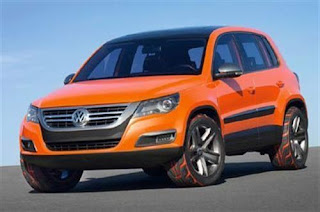As far as stylish estate cars go, few can rival the good-looking C5 Tourer. The sharp lines are a stark contrast to the dull shape of the previous model and the C5 shows that Citroen has rediscovered its flair for unusual and striking design. But that hasn't come at the expense of practicality. There's a massive 1,500-litres of boot space, while rear passenger room is good too. The C5's real strengths, however, are its superb levels of comfort and refinement which make it a great long distance car. A vastly improved interior, generous equipment levels and a range of excellent diesel engines make it even more attractive.
There's a good choice of petrol and diesel engines in the C5 Tourer range. The entry-level engine is the 1.8-litre petrol with 127bhp while the more powerful 143bhp 2.0-litre unit is available with an optional four-speed automatic gearbox. Both offer adequate performance but they're outshone by the excellent range of diesels. First up is the 1.6HDi with 110bhp which although not particularly quick, returns 50mpg. However our choice is the 138bhp 2.0HDi which offers better in-gear punch for overtaking and is almost as frugal. For even more pace there's also a 2.2HDi unit with 173bhp while the range-topping model is the 2.7-litre V6 diesel with 208bhp.

Like the saloon the C5 Tourer is happiest cruising on the motorway where it will cover long distances with minimal fuss and maximum comfort. The Citroen is unusual as it comes with a choice of two different suspension settings - entry-level SX models are conventional but higher spec models come with a 'hydropneumatic' self-levelling system designed to give added comfort. Most buyers will find it difficult to notice any difference but the air suspension does have a 'sport' setting which firms things up for more twisting roads. There's still some body roll in corners but the C5 corners with confidence and offers plenty of grip. It's a shame that the steering feels overly light but this does make town driving and tight manoeuvres a doddle.
This is the C5's forte. Like Citroen's of old it majors on ride comfort, soaking up potholes and bumps with ease to produce a magic carpet-like ride. This makes it superb on the motorway where passengers will appreciate the lack of wind and road noise - helped by the acoustic windscreen and multiple door seals. Compared to the old model, the new C5 certainly feels more refined. The seats are soft yet supportive while passengers in the back get generous head and leg room.
With the rear seats in place the C5 Tourer offers a decent 505 litres of boot space - that's larger than the Peugeot 407 SW although not as big as the cavernous Ford Mondeo Estate. The luggage area is wide and easy to access thanks to a large opening, although there's an annoying load lip and no underfloor storage areas. Lowering the rear seats could be easier too - there's no lever in the boot so the only way to fold them is by leaning in through the rear doors. Once folded, the boot capacity increases to almost 1500 litres while the suspension can be cleverly raised or lowered to make loading heavy items easier. An electric tailgate is also available but while it's a handy feature it's not particularly quick and can't be manually overridden.
The C5 received a five star Euro NCAP crash test rating. This is the maximum score, although anything less than the top score would be considered poor for this type of car. Seven airbags come as standard, including side, curtain knee airbags) while two extra rear side airbags can be specified as options. Stability control and electronic brakeforce distribution (which automatically varies the amount of braking on each wheel depending) are both standard plus there are three Isofix points (two in the back and one for the front passenger seat). On the security side, there's an alarm, deadlocks and laminated glass to help prevent break-ins.
The original C5 launched in 2001 did not have a good reputation for reliability. A significant facelift in 2004 brought improvements in build quality, but overall it lagged behind the competition. The latest version feels much better built, uses proven diesel engines and is far better trimmed inside. This should translate into improved reliability, though time will tell if this is actually the case.
Buyers who have previously bought a C5 may find that the incentives and discounts on offer aren't as generous as before - the 'premium feel' of the C5 means it won't be sold as a bargain basement car. You're still likely to be able to negotiate a deal or at least get some extras included in the final price. That said the C5 is good value with generous levels of equipment and competitive list prices. Buy a new C5 Tourer and save 19% on selected models














